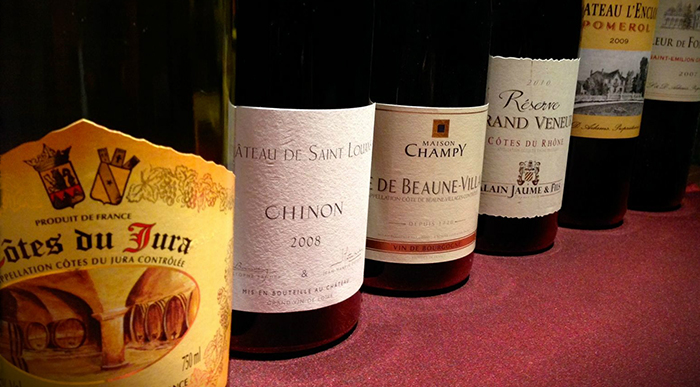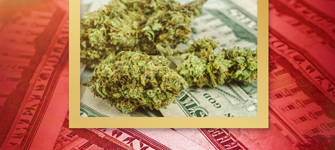As the cannabis-as-industry conversation expands and the edge of marijuana prohibition continues to unfold across the United States, people are beginning to understand its benefits as a viable agricultural product. Cannabis is a commodity capable of producing jobs, wellness, and economic growth to workers, cities, states, and our country as a whole. Because of the many appreciable properties of cannabis as a tonic and source of well-being and joy, emerging are many parallels to its sister ambrosia, wine. Budtenders are referred to as cannabis sommeliers while interpening is taught in school.
In the quest of a growing industry to construct viable regulations, thriving brands and a safe, educated consumer base, the players at large are grasping at surrounding sectors to sculpt its shape. And since cannabis grown outdoors can be defined by geographic features of earth, sun, rain, and air, will it soon have appellations like wine?
What’s an appellation?
A wine appellation is the legal geographical identity of grapes and wines produced in winemaking. It identifies the country, region, and subregion of origin, including any laws regulating how a particular wine in that region is produced. Many countries use the system. In the U.S., an appellation is called an American Viticultural Area (AVA). In the United Kingdom, there’s Protected Denomination of Origin (PDO). In France, the Appellation d’origine contrôlée (AOC). Italy has the Denominazione di Origine Controllata (DOC). In Canada, it’s the Vintners Quality Alliance (VQA). And so on. Each country and each appellation has its own rules and distinctions when it comes to approving wines that carry the appellation name. And appellations aren’t always exclusive to wine. For example, France’s AOC designation is also awarded to cheese, honey, meat, lavender, spirits and other agricultural goods.
Certifying the geographical origin of agricultural goods is based on a fundamental tenet of quality farming, terroir. Essentially, terroir is the set of environmental conditions that affect each harvest’s outcome. It’s how location, soil, air, sun, and the weather, among other environmental variables, produce distinguishable characteristics like color, scent, and flavor in produce. Some of the most well-known examples of this process are found throughout Europe, like France’s world-class Champagne, a sparkling wine produced in the Champagne region that must be created to certain specifications from grapes grown among the Champagne appellation. It is illegal to officially label any product Champagne unless it both comes from the Champagne region and is produced under the rules of the Champagne appellation. And there’s Bordeaux, France’s largest winemaking region, spanning 60 appellations and representing several thousand wine producers who produce over 10,000 unique wines per year.
In the U.S., AVAs are designated by the Alcohol and Tobacco Tax and Trade Bureau (TTB) of the United States Department of the Treasury. In order to label a wine from a specific AVA, at least 85 percent of the wine must be produced from grapes grown within the boundaries of the geographical AVA. Since each AVA resides in different municipalities, counties, and regions in our country’s states, each AVA will generally have a set of standards and local regulations that influence the outcome of the area’s winemaking.
One of the main drivers of designation is to proliferate a region’s brand recognition and overall marketability in other territories; appellations create a system for its producers to leverage the region’s geographic terroir, namesake, and perceived quality or superiority for sales purposes. Appellation designations also prevent outside producers from cloaking a region’s namesake.
Wine appellations are an ancient tradition. The oldest references to them are found in the Bible while the world’s first recorded “vineyard zone” was created in 1716 in Chianti, Italy. The first U.S. wine AVA was created in 1980. The U.S. AVA system has since expanded to include 230 AVAs across the country. One of the most popular AVAs is now California’s North Coast, home of the world famous sub-appellation Napa Valley—along with Sonoma, Stags Leap, Mendocino, and nearly 50 others. Napa Valley became California’s first designated AVA in 1981.
Emerging Regions
Bordering Napa is one of the U.S.’s first emerging cannabis regions, the Emerald Triangle. This region includes the three counties of Humboldt, Mendocino, and Trinity, where decades of large-scale renegade and outdoor craft cannabis production have been taking place. As adult-use legalization begins to emerge in California, collectives of farmers are beginning to brand their region’s cannabis on a larger scale. Already, the Mendocino Appellations Project seeks to do just this.
Just north, across the California Oregon border, swaths of high-quality outdoor cannabis is grown in Oregon’s “Applegate Valley,” while the state’s impressive Willamette Valley wine region is becoming home to numerous large-scale greenhouse and light-dep grows. Whether or not Oregon and other U.S. cannabis farmers seek to designate appellations remains to be seen.
As the Western U.S. states become cannabis agriculture industry frontrunners, especially as their bulk flower and trim gets bought and formed into concentrates, terpene oils, edibles, and sold in other regions under different brand names, regional designation may be one to way to protect their combined interests and succeed.
Should we care?
Allowing local cannabis farmers and producers to designate appellations and certifications on products can help prevent large corporations and outside companies from coopting their home region’s influence for their own branding and marketing. Also, it could make great cannabis harvested in designated appellations more highly valued on the market. Former president John F. Kennedy was known for echoing an apropos maxim: “a rising tide lifts all the boats.”
As the notion looms that legal cannabis sales may one day transcend state lines, many policymakers and business owners, especially those in adult-use states concerned with protecting and proliferating cannabis as a thriving agricultural product capable of providing jobs, forging sustainability, and boosting economies, are particularly excited at the thought of designation. They’re busy readying their regions, branding and marketing their locales for high demand throughout the country, and possibly, the world. Cannabis is set to become many regions’ most valuable cash crop.
And this extends to hemp, too. Areas of Kentucky, Colorado, and over 30 other states are building their outdoor hemp-cropping programs to provide hemp for use in manufacturing numerous consumables—everything from paper and skin care products to CBD supplements and hemp dog treats.
Should we do it?
Proper product labelling is important from a regulatory and safety standpoint as well as marketing and branding. As much as appellation designation has to do with climate and geography, it is influenced by collectives, financial interests, and politics, as it is with wine. What do you think? Are cannabis appellation designations are a good idea?











